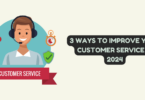
Online Classes
As the digital age continues to evolve, online classes have become increasingly popular for both educators and students alike.
In this comprehensive guide, we explore the ins and outs of creating and promoting successful online classes and pinpoint exactly what it takes to make them stand out from the competition.
This guide also explains what an online class is and why they’ve become so popular, tips and tricks on how to make your content engaging and interactive, and strategies on how to promote and market your classes to reach a wider audience.
If you’re interested in developing effective and efficient online classes that make a splash, read on to learn more!
Online Classes and Why They Have Become So Popular
Online classes are rapidly gaining popularity as an alternative to traditional classrooms. This form of the educational platform allows students from anywhere in the world to access and learn from a pool of expert instructors, tutors, and other resources. If you take a look at these statistics on class size, you can see larger in-person classes have steadily decreased in the last few years, which might be influenced by the rise in online learning.
It effectively supplies education tailored to individual needs by connecting learners with qualified mentors and providing the necessary tools for delivering a course in remote settings, thus preventing unnecessary costs associated with campus visits or physical learning environments.
What makes online classes even more advantageous is their flexibility; they allow students to take lessons at any time and place that suits them best.
Furthermore, compared to conventional tuition-based training models, these virtual sessions tend to be cheaper as they eliminate expensive materials such as textbooks or study guides.
How to Create an Engaging Online Class Experience for Your Students.
Creating an engaging online class experience for your students requires more than just including a few multimedia elements and assigning readings; it requires taking the necessary steps to ensure that your students are motivated, engaged, and able to maximize their virtual classroom experience. These steps include:
Choose a Suitable Platform
Different platforms provide different features, so it’s important to choose one that works best for you and your students. Popular choices are Google Classroom, FreeConference, Blackboard, and Moodle.
Ascertain that the platform supports creative group activities, encourages participation through Q&A options, and includes dynamic multimedia formats such as video, audio, infographics, images, and polls. Additionally, an alert and notification feature is an important part of class scheduling software that sends automatic reminders to students.
Interaction is key
To start with, courses need diversity in terms of a content type. Besides providing traditional written materials such as lessons or readings, instructors should also consider incorporating interactive activities or video segments into their classes.
This type of activity helps to keep classes interesting and encourages participation from the students. Furthermore, providing ample opportunities for collaborative work within the class also increases student engagement while helping them network within the course’s community.
Use visual Aids and Digital Tools
Incorporating visual aids and digital tools into your online class can create an engaging atmosphere for your students. You can make use of videos, images, and infographics to supplement material that ensures your students stay focused and interested in the subject at hand.
In addition, interactive quizzes and assignments are great ways to make learning more fun while helping them grasp challenging topics. Furthermore, modern technologies like virtual reality and class booking software can provide a unique learning experience that is both entertaining and educational.
Maintain Consistent Communication
As a teacher, you need to maintain consistent communication with your students throughout the entire class duration. Also, promote regular check-ins at scheduled intervals in order to ensure that everyone remains on track and answers any queries in real-time.
This helps further personalize learning experiences by creating an intimate connection between instructor and student, even when teaching remotely from afar. In addition to this factor, setting clear expectations from day one regarding deadlines establishes discipline among participants which plays a large role in fostering engagement during classes.
Strategies to Promote and Market Your Online Classes
For online classes to reach a wider range of students, promotional strategies should be employed to increase reach. Utilizing tactics such as:
Digital Marketing Campaigns
Digital marketing campaigns are incredibly effective for boosting engagement with customers, making them an invaluable tool in today’s marketplace.
You can use your creative ideas and content to reach a variety of potential students by running paid Google Ads, utilizing PPC (pay-per-click) advertising on different platforms, and optimizing SEO for search engine rankings.
Email Marketing
Email marketing is an effective way to engage with customers while offering them more detailed information about the courses you offer. You can use this approach to capture leads, inform potential customers of upcoming classes, or send discount coupons for special offers.
Word-of-Mouth Marketing
Word-of-mouth marketing remains one of the oldest and most effective promotion strategies. Using satisfied students as references is a great way to establish trust with prospective clients and get your classes out there quickly.
Social Media
Social media is an effective way to reach a wide range of potential students. You can use platforms like Twitter, Instagram, or Facebook to post regular updates about your services and upcoming classes, as well as interact with customers and answer any questions they may have.
Instructional Video Snippets
Instructional video snippets are becoming an increasingly popular tool for imparting knowledge and teaching a variety of skills; they provide an effective, concise means of communicating information that can be readily adapted to multiple contexts and shared easily with others.
This is done by creating short snippets of your online classes each month to give viewers a glimpse into what your courses are like. This type of content can be easily shared and distributed across various digital platforms, giving you greater visibility and reach.
By following the above tips on how to make your online classes more popular, you’ll be able to create an engaging and successful learning experience for your students.
Final Conclusion
Online classes have become a popular way to gain knowledge in a convenient and accessible manner. With the right strategies, you can create engaging courses that reach students from all walks of life.
By following best practices for creating an interactive and positive learning environment, providing valuable content to your students, using marketing tactics to promote your course offerings, and making continual improvements based on feedback from your learners, you will be well on track for increasing the popularity of your online classes!





